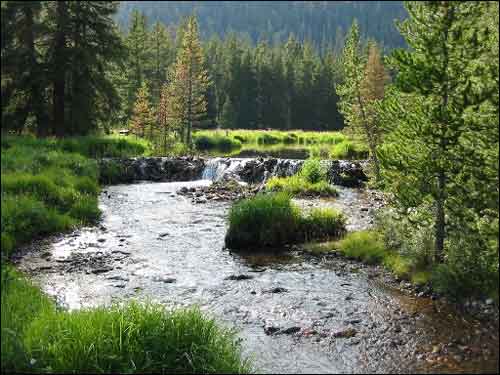
A 12-year study on the U.S. Forest Service’s Harshaw Experimental Forest near Rhinelander, WI is challenging long-held assumptions about how future forests will respond to the rising levels of carbon dioxide in the atmosphere.
It appears from the Rhinelander study that North American forests have a greater capacity to soak up heat-trapping carbon dioxide gas than many scientists had thought. The implications are huge because this means forested lands could help mitigate the effects of a warming climate beyond what was always assumed by scientists.
Scientists that worked on the report including Mark Kubiske of the U.S. Forest Service Northern Research Station feel that some initial assumptions about ecosystem response are not correct and will need to be revised. The studies team, lead by University of Michigan microbial ecologist Donald Zak, simulated atmospheric conditions that are expected in the latter half of this century. They did this by continuously pumped extra carbon dioxide into the canopies trees on the experimental forest.
Another aspect of the research included soaking some of the study trees in elevated levels of ground-level ozone (the primary element in smog) to simulate what many scientists believe will be the increasingly polluted air of the future.
Both parts of the experiment which are the carbon dioxide and the ozone treatments produced unexpected results.
Aside from trapping heat, carbon dioxide is known to have a fast-growth effect on trees similar to common fertilizer. Climate researchers and ecosystem modelers assume that in coming decades, carbon dioxide's fertilizing effect will temporarily boost the growth rate in North America’s forested lands.
Previous studies have concluded that this growth spurt would be short-lived, grinding to a halt when the trees can no longer extract the essential nutrient nitrogen from the soil. But in the Rhinelander study, the trees soaked in elevated carbon dioxide continued to grow at an accelerated rate throughout the 12-year experiment. The research suggests that the extra carbon dioxide allowed trees to grow additional small roots and "forage" more successfully for nitrogen in the soil.
But, according to the scientist in the study, the growth-enhancing effects of CO2 in forests will eventually "hit the wall" and come to a halt. The trees' roots will eventually exhaust their ability to soak up the soil's nitrogen resources, but the researchers of the study do not know how long it will take for the trees to reach their limit.
